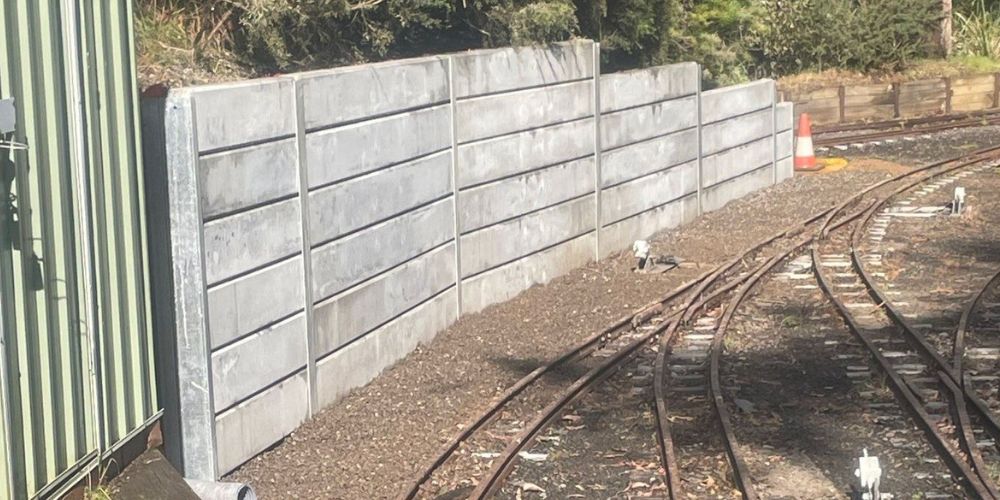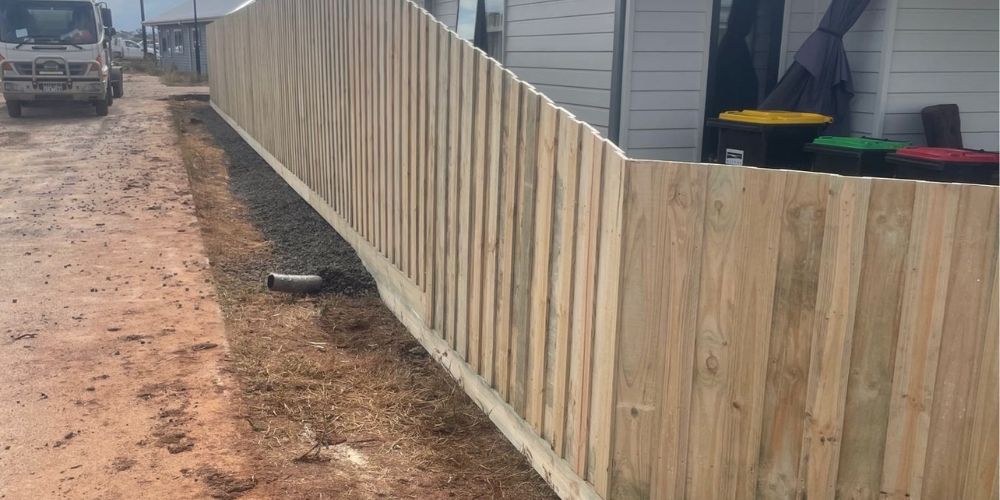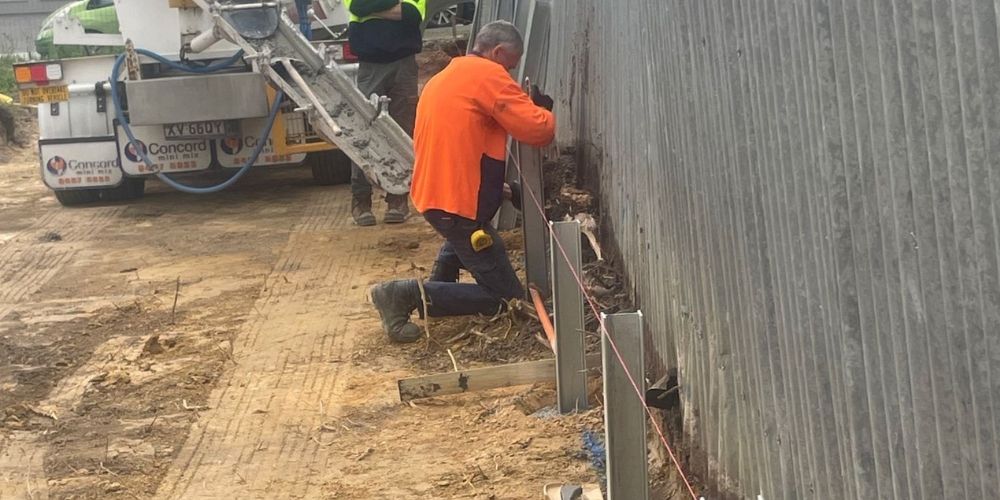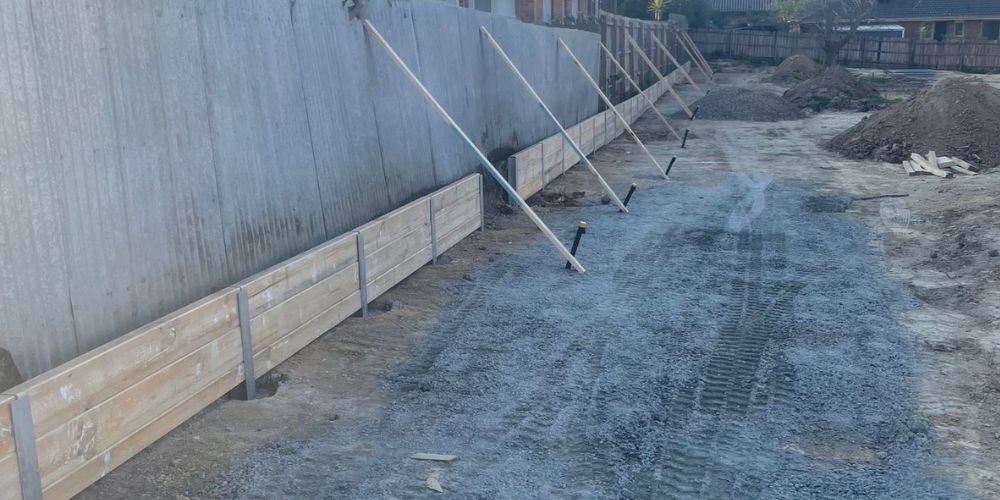Fence vs Retaining Walls: Which One Do You Need?
Fence and retaining walls sound confusing, right? Though both serve as common solutions for property boundaries, they cater to distinct needs and come with unique advantages.
As the guardians of your property’s perimeter, fences provide a range of benefits, from ensuring privacy and security to enhancing visual appeal. On the other hand, retaining walls is crucial in managing challenging landscapes, preventing soil erosion, and adding structural support to your outdoor spaces.
But how do you know which one you need? Let us share the key points to help you decide which one you need for your property. As retaining wall builders in Melbourne for almost two decade now, we guarantee we are the right person you should ask about this!

Importance of Selecting the Right Boundary Solution
We often hear our clients say, “What’s the big deal? It’s just a fence or a retaining wall.” But let me tell you, choosing between the two is like picking the right pair of shoes – it might not seem like a big deal until you realise you’re wearing flip-flops in the snow or snow boots on a beach vacation!
Your property’s boundary solution isn’t just about aesthetics; it’s about functionality, longevity, and ensuring you get the most bang for your buck. So, why does it matter so much?
Your Property's First Impression
Imagine having a tastefully designed fence to greet visitors or a retaining wall that blends well with your landscaping. The perimeter of your property is the first thing people see, giving an impression of what’s within. Like a book cover, it’s captivating and offers a glimpse of the tale inside.
Security and Privacy
\Do you value your privacy? Of course you do! The correct boundary solution can be your fortress, whether dealing with a chatty neighbour, a curious bystander, or simply creating a safe refuge for your family. A well-planned fence or retaining wall provides additional security in addition to deterring prying eyes.
Sturdy Protection Against the Environment
Given the unpredictability of Mother Nature, your property must endure with dignity. An appropriately chosen boundary solution can shield your property from weather, shifting landscapes, and soil erosion. It’s about being resilient throughout the seasons, not simply looking good.

Fence vs Retaining Walls - Key Differences
Fences and retaining walls are options for defining property boundaries and crafting outdoor spaces, and understanding their differences can help make the right choice.
Types of Fences
Wooden Fences
Wooden fences are a timeless option that gives your property a sense of cosiness and warmth. Wooden fences have an unmatched visual appeal, whether you choose a more modern horizontal design or the classic picket form. Their beauty is in how readily they can be painted or stained to fit your favourite colour scheme, allowing them to become an extension of your unique style.
Vinyl Fences
Vinyl fences become a compelling option for individuals looking for a low-maintenance, long-lasting combination. Vinyl is resistant to weather, rot, and vermin, meaning your fence will last many years without fading or breaking. Vinyl fences are available in different styles to suit both traditional and contemporary preferences, simulating the appearance of wood without maintenance.
Chain-Link Fences
Chain-link fences combine affordability and practicality, making them an affordable option for enclosing vast regions. These fences create a defined border and preserve an open feeling, making them perfect for front yards where visibility is crucial. Furthermore, the structure of galvanised steel guarantees longevity and safety without sacrificing visibility.
Advantages of Fences
Privacy and Security
Aside from being a physical barrier, fences provide privacy and security. Fences define a certain area that is yours alone, making them ideal for securely keeping kids and dogs inside the property.
Improvement of Aesthetics
In addition to being functional, fences greatly improve the appearance of your home from the outside. You can choose a fence that enhances your home’s overall visual appeal by complementing your house’s architecture with many design alternatives.
Adaptability
Fences adapt to different settings, whether you live in a huge country estate or a suburban home. Variety in materials and designs provides the adaptability required to accommodate a range of tastes and property kinds.
Types of Retaining Walls
Gravity Walls
Gravity walls are stable and have a natural appearance that complements garden settings because of their mass and weight. They are more than just structural support; they are essential to outdoor design.
Cantilever Walls
Cantilever walls come into play when extensive structural support is required because of their capacity to retain large volumes of soil. Their adaptability in design permits curves or stairs, which enhances the visual appeal of your outdoor area.
Anchored Walls
Ankle stays or cables are used in anchored walls to withstand soil pressure for individuals looking for additional stability efficiently. These walls effectively manage sloping or steep terrain since they offer a strong way to prevent erosion and preserve a well-manicured landscape.
Benefits of Retaining Walls
Erosion Prevention
In particular, retaining walls are essential for preventing soil erosion on hills or uneven terrain. They help maintain your landscape’s integrity and maintenance by keeping dirt in place.
Structural Support
Retaining walls provide elevated regions with crucial structural support and aesthetic benefits. This is especially useful for keeping the ground from collapsing and shifting, which makes it possible to build terraces or gardens with multiple levels.
Customisation and Style
Retaining walls offer you the chance to improve the overall appearance of your outdoor area in addition to their practical use. With various materials, finishes, and design choices, you can build a retaining wall that improves the aesthetic appeal of your home and fulfils its functional needs.

Factors Influencing Your Decision
Retaining walls offer you the chance to improve the overall appearance of your outdoor area in addition to their practical use. With various materials, finishes, and design choices, you can build a retaining wall that improves the aesthetic appeal of your home and fulfils its functional needs.
Topography of the Property
Explore your land on foot and note its natural features. A retaining wall could be the best option when your land is uneven or slopes steeply. In addition to stabilising slopes and avoiding soil erosion, retaining walls offer crucial support. However, if your property is mostly level, a fence can provide the required border with little structural support.
Financial Considerations
The most practical choice is determined in large part by your budget. Fences typically come in various styles and materials, giving pricing options. For instance, chain-link fences are inexpensive, but vinyl or timber alternatives could cost more upfront. Retaining wall costs can vary greatly based on the materials selected and the level of sophistication. When choosing your choice, it’s critical to consider both the immediate costs and ongoing maintenance requirements.
Local Regulations and Zoning Laws
Learn the zoning and municipal restrictions before constructing your chosen boundary solution. Local governments frequently establish rules about the location, height, and kind of fences. There can also be limitations on retaining walls. By being aware of these rules, you can ensure that your project conforms to local requirements and stays out of trouble legally.
Aesthetic Preferences
Your property is an extension of your style, and your choice between a fence and a retaining wall should align with your aesthetic preferences. Many design alternatives exist for fences, ranging from contemporary vinyl forms to traditional wooden picket fences. Additionally, available in various materials, retaining walls can be tailored to improve the overall appearance of your outdoor area. Consider your home’s architectural style and intended visual impact when choosing.
Maintenance Requirements
Different border solutions require different amounts of upkeep. Vinyl fences are low-maintenance and weatherproof, but wooden fences may need to be stained or painted regularly. Depending on the materials used, retaining walls may require periodic structural integrity checks and drainage problems to be fixed. For your investment to last and be durable, it is essential to comprehend the maintenance needs of the solution you have selected.
Neighbourly Relations
Think about how your decision will affect your neighbours. A high, substantial fence could block their sunlight or view, leading to arguments. Talk to your neighbours about your ideas and be willing to work together to find a solution that suits their preferences. In addition to offering necessary support, retaining walls can affect water drainage. Knowing how your decision may affect individuals in your immediate vicinity fosters a peaceful neighbourhood atmosphere.
DIY vs. Professional Installation
When diving into the world of setting up a fence or a retaining wall, deciding whether to roll up your sleeves for a DIY adventure or bring in the pros can be a real head-scratcher. Going the DIY route is like jumping into a project headfirst—it’s all about that feeling of accomplishment and maybe saving a few bucks along the way. You can call the shots, express your creativity, and own the project timeline. But hold on tight because DIY comes with its own set of challenges. You’ve got to measure things just right, understand the nitty-gritty details, and stay on top of local rules and regs. Slip-ups can happen, and a wonky fence or wall might result.
Now, if you’re not in the mood to play construction maestro, there’s always the option of calling in the pros. These folks are the masters of the craft, armed with the skills and know-how to make your boundary dreams a reality. Sure, it might cost a bit more upfront, but here’s the kicker: you get time back, a load off your shoulders, and a guarantee that everything’s up to snuff with local codes. Pros also have the hookup on top-notch materials and tools, potentially boosting your fence or wall’s durability. It’s like getting VIP treatment for your property.
So, are you the hands-on type, ready to tackle the challenge and bask in the glory of a DIY victory? Or is the idea of a pro swooping in, doing their thing, and leaving you with a perfect setup more your style? The choice boils down to your comfort level with DIY projects, the complexity of what you’ve got in mind, and how much you value a job well done without the hassle. Whatever you decide, ensure it jives with your vision for your space.

Maintenance Tips
After investing to improve your property with a fence or retaining wall, it’s important to maintain them for many years.
Frequent upkeep protects these important components’ structural integrity while preserving their aesthetic attractiveness. Here are some useful advice to maintain the best possible condition for your retaining walls and fences:
For Fences:
- Inspect Regularly: Your first line of protection should be routine visual checks. Keep an eye out for indications of wear, damage, or loose parts. Early problem detection can save more costly repairs later on.
- Clean and Treat Wood Fences: Cleaning and treating your wooden fence regularly is vital. After giving the wood a light scrub to remove any dirt, mould, or mildew, cover it with a weather-resistant stain or sealer to keep the weather out.
- Clean and Treat Wood Fences: Regularly tighten hinges, nuts, and screws. If loose hardware is not fixed right away, it can cause more serious issues and weaken the stability of your fence.
- Trim Vegetation: Keep plants and vines away from the fence. Overgrown vegetation can damage the structure and trap moisture, leading to rot or decay.
- Address Repairs Promptly: If you notice any damage during your inspections, address it promptly. Whether it’s a cracked board, a leaning post, or a sagging gate, timely repairs can prevent the issue from escalating.
- Paint or Stain as Needed: Depending on the material, repaint or restain your fence every few years to protect it from the sun, rain, and other weather elements. This also gives your fence a fresh, well-maintained look.
For Retaining Walls:
- Check for Structural Integrity: Check the retaining wall periodically for any indications of bulging, settling, or leaning. These might be signs of possible structural problems that must be fixed.
- Clear Drainage Channels: Make sure debris is out of the retaining wall’s drainage channels or weep holes. Proper drainage is essential to avoid water accumulation behind the wall, which might cause instability.
- Reinforce Soil as Needed: If you observe any signs of soil erosion or settling behind the retaining wall, consider reinforcing the soil. Maintaining appropriate compaction can require adding gravel or other materials.
- Inspect for Cracks: Keep an eye out for any retaining wall cracks. While smaller cracks might not be dangerous, larger ones might indicate structural issues. If you are worried, get professional advice.
- Get Rid of Surface Stains: If there are surface stains on your retaining wall from dirt, mould, or other environmental elements, clean them with a pressure washer or mild detergent regularly. This preserves the aesthetic appeal of the wall.
- Address Vegetation Growth: Similar to fences, overgrown plants can have an impact on retaining walls. Trim any encroaching plants or vines to avoid harm and ensure appropriate drainage.
Frequently Asked Questions
Yes, adding plants or decorations can enhance the aesthetic appeal of both fences and retaining walls. However, ensure that any attachments are secure and won’t compromise the structural integrity of the boundary solution.
The ideal height for a privacy fence depends on your preferences and local regulations. Typically, privacy fences range from 6 to 8 feet in height to provide a secure and secluded outdoor space.
Proper drainage is crucial. If you notice water pooling behind the retaining wall, consider installing drainage pipes, gravel backfill or consulting with a professional to address the drainage issue effectively.
Yes, installing lighting can add ambience and security. Solar-powered or low-voltage LED lights are popular options. Ensure that any electrical installations comply with safety regulations.
Conclusion
The choice between a fence and a retaining wall goes beyond aesthetics—it’s about usefulness, lifespan, and harmonising with the specific needs of your land. This guide has given you the tools to make informed decisions, regardless of your preference for the timeless elegance of a well-made fence or the structural stability of a retaining wall.
Feel free to contact experts in the area if you’re ready to learn more about your options or have particular queries. Your property deserves the best, and the first step in designing an area that showcases your unique style is selecting a fence or retaining wall.
